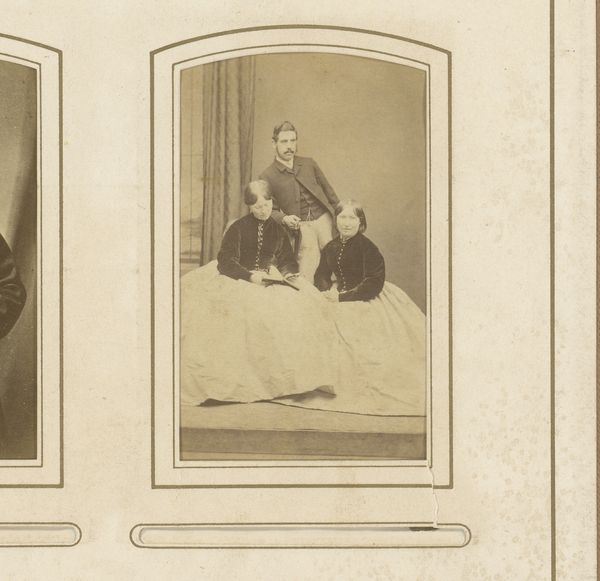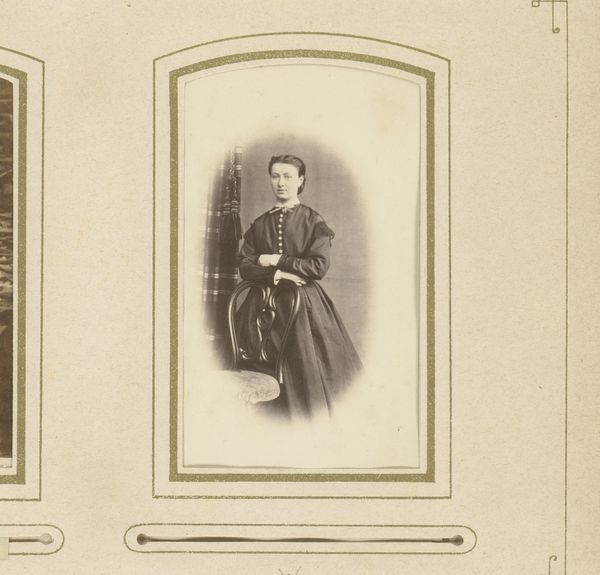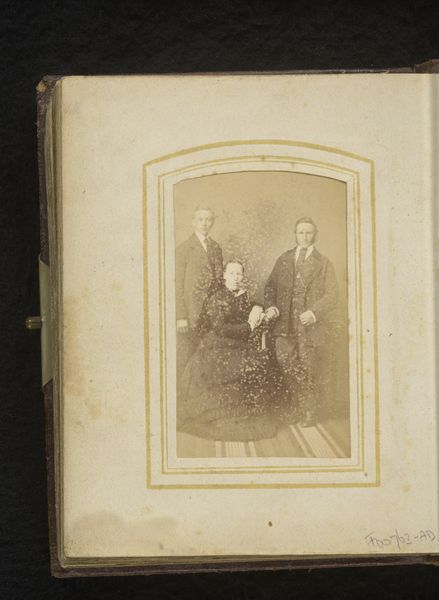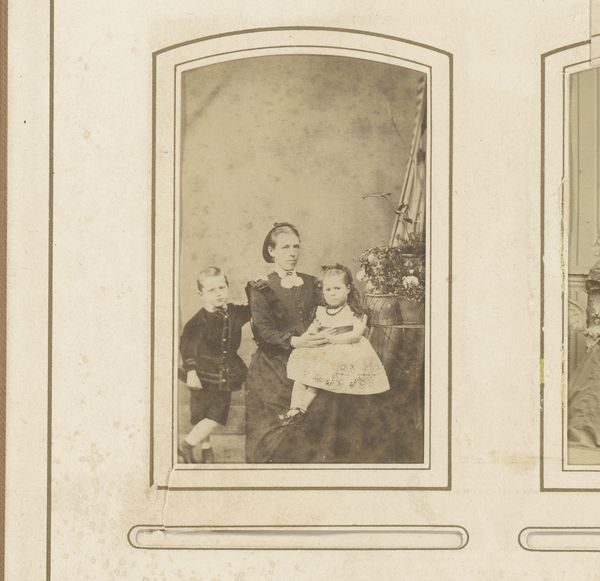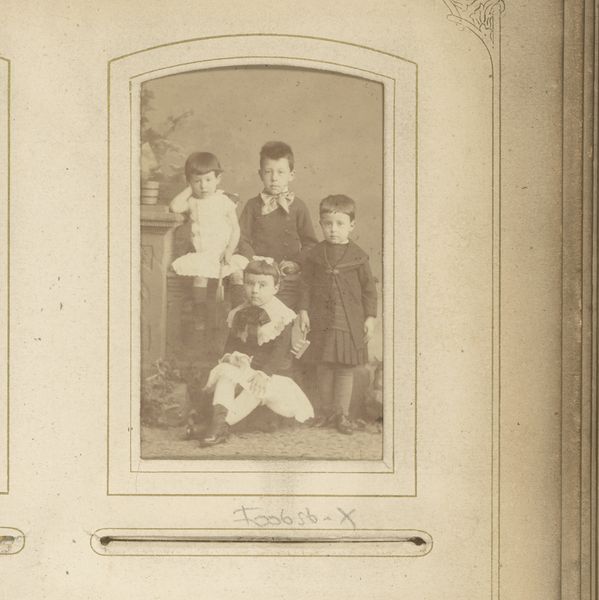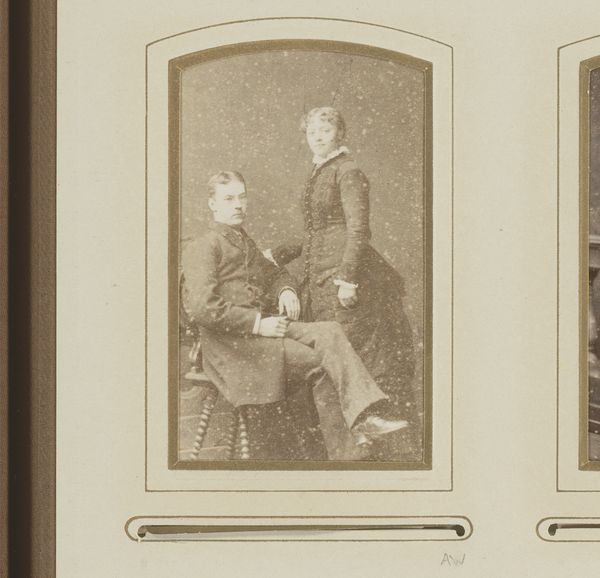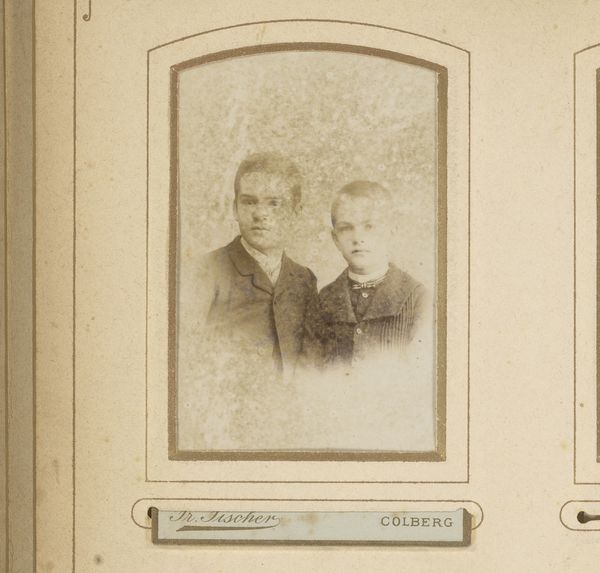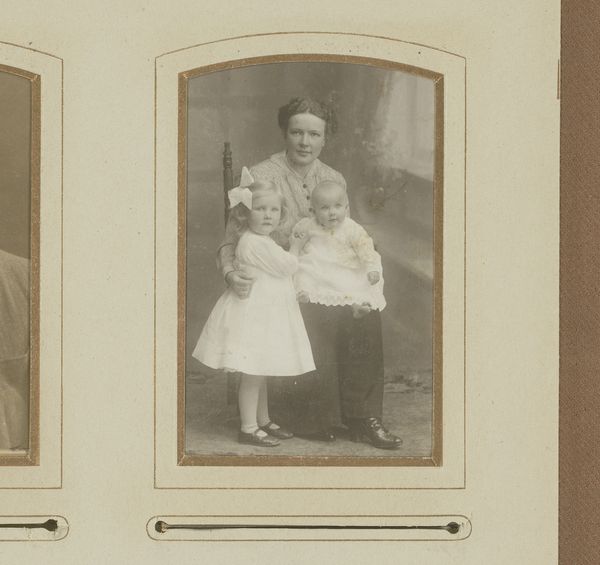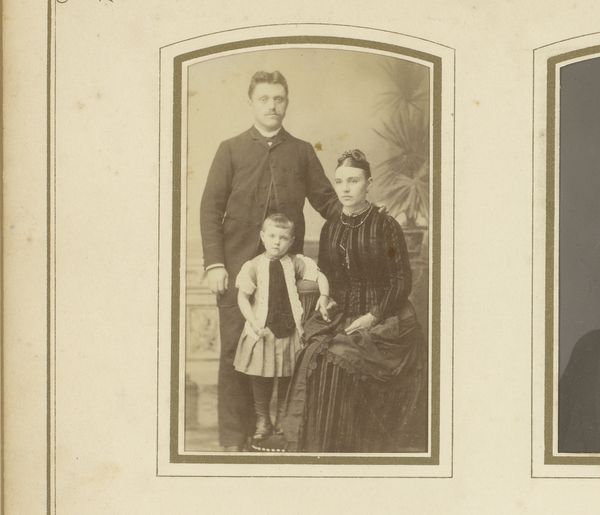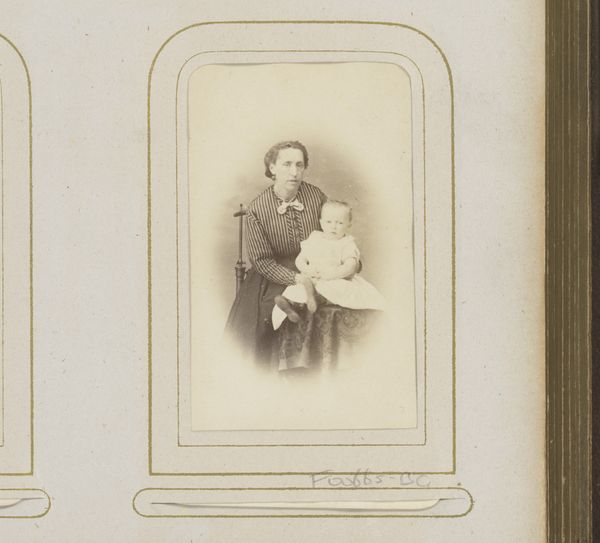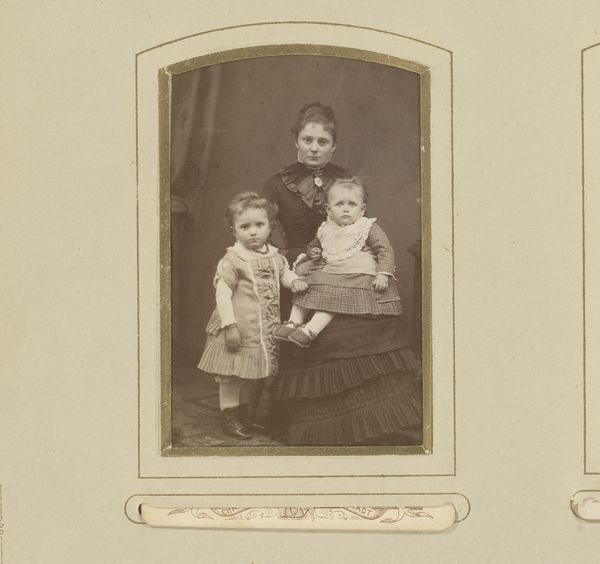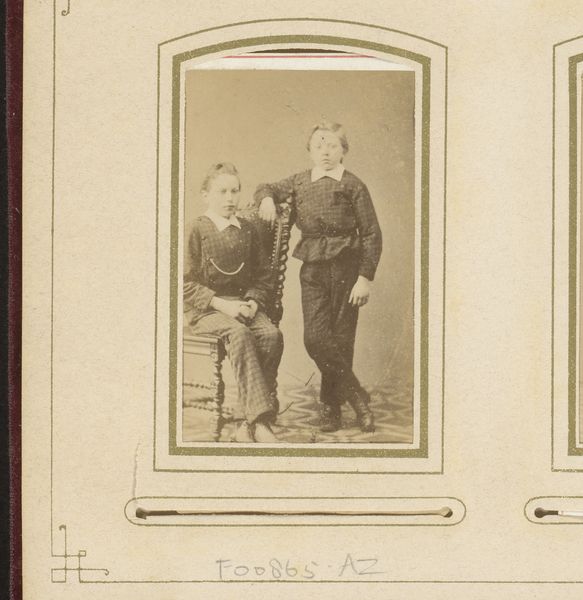
photography
#
portrait
#
photography
#
realism
Dimensions: height 82 mm, width 52 mm
Copyright: Rijks Museum: Open Domain
Curator: This photo, titled "Portret van een man, een vrouw en een jongen bij een hek" which translates to "Portrait of a man, a woman and a boy by a fence," was taken between 1878 and 1885 by Eugène Guérin. It’s a compelling glimpse into the late 19th century. Editor: There's such formality in the pose. Even the light seems hushed. You feel the weight of tradition, that sort of middle-class solemnity, it feels preserved somehow, and it really stands out within the picture. Curator: Exactly. The fence acts as both a literal and symbolic barrier, subtly speaking to class divisions, social standing. See how they’re positioned – the man leaning casually, the boy formally seated, the woman standing protectively? Editor: And what about the photographic process itself? This wouldn’t have been an easy, point-and-shoot affair. It required careful setup, precise chemical processes, considerable time. Consider the investment of resources, material resources and labour just for one photograph. Curator: A fascinating point. They aren't just capturing a likeness but crafting an artifact of aspiration. Photography was becoming accessible, yes, but still imbued with the power to document social identity. It became a performative exercise. Editor: Yes, everything from their dark, restrained clothing to their serious expressions points to a conscious presentation of self. Were these factory workers posing on their day off, or did they own that factory? It’s also an act of material consumption - clothing and accessories signify far more in the black-and-white images of that time, perhaps because the material choices stand for so much more with the absence of color. Curator: Looking deeper, the woman's stance is interesting; subtly guarding the boy while the man adopts a pose of aloofness. What stories might that familial configuration tell? Editor: Right. In terms of making it a very valuable document, that seemingly candid decision carries far greater social meaning. You begin to ponder its worth when it's detached from its owners; now we assign value. Curator: Yes, seeing how it’s bound with other photographs in what appears to be a bound collection makes you think about time and preservation, a window into their lives as we've tried to apply the photograph. Editor: It does. And with that consideration of material history and a focus on craft and image-making, it reminds you of all the various levels of work that go into any image, beyond just artistic inspiration.
Comments
No comments
Be the first to comment and join the conversation on the ultimate creative platform.
